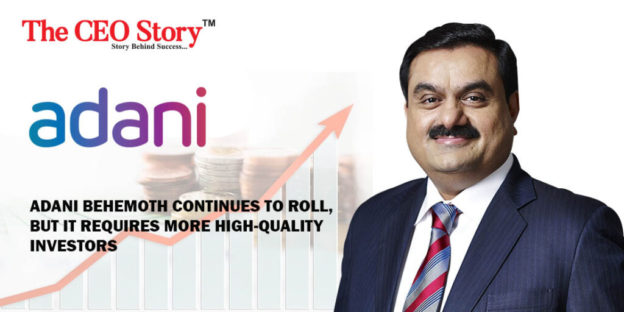- The Adani Group slammed the claim as “clearly untrue,” helping to keep stock prices from plummeting.
- Adani Ports & Special Economic Zone Ltd. is spouting $1 billion every year, a nine-fold increase since 2014.
On Wednesday (16th June), the selling persisted.
A brief bout of stock market jitters won’t stop Asia’s second-richest man, who has managed to maintain a decade-long involvement in a contentious and costly coal mine project in Australia despite having little certainty of future return. Behind that self-assurance is the group’s workhorse. Adani Ports & Special Economic Zone Ltd. is spouting $1 billion every year, a nine-fold increase since 2014.
The coming together of the various pieces in Adani’s huge infrastructure puzzle has paralleled the rise of Narendra Modi, the long-time chief minister of Gujarat, Adani’s home state, who has served as India’s prime minister for the past seven years. All the businessman requires is a decade-long dream run in which India rises from a lower-middle-income economy to a higher-middle-income one to make his bets pay off.
It’s possible that the increase in per capita income was postponed even before Covid-19. Still, when the growth spike arrives, it should result in a surge in commodity demand, similar to what China experienced between 2006 and 2016. Adani will obtain the cash that will justify the estimated $20 billion debt in the group’s listed companies by supplying electricity to 1.4 billion Indians while they sleep, providing them with piped gas while they sit down for breakfast, and planning to host their data while they browse the Internet and wait for a flight to take off from one of his airports.
That’s why this week’s turmoil isn’t completely meaningless. If investor confidence continues to erode, the company may need to slow down its rapid expansion, lest financiers become nervous as well. That will not work for Adani.
In less than three decades, his low-key trading firm has grown into a large owner of energy and transportation assets in a country that lacks both. The entrepreneur is now looking to strengthen cement manufacturing, likely using fly ash from his power plants. An initial public offering (IPO) for the airport company could potentially be in the works.
It’d be a standard move. The parent corporation, Adani Enterprises Ltd., has spun off many entities onto the public market to take advantage of the capital-hungry opportunities that have come it’s way. However, the list of shareholders of these equities, which have increased in value by 200 percent to 900 percent in the last year, requires some explanation. Adani Green Energy Ltd., for example, aspires to become the world’s largest renewable energy generator by 2030. Total SE bought a 20% share in the company earlier this year. That’s a great title. Vanguard Group Inc. and Blackrock Inc., both of which have minimal shares, are similar.
Elara India Opportunities Fund, for example, is sandwiched between them. Adani Group shares appear to have provided the majority of the prospects for the $4 billion investment vehicle. Beyond the five companies that control 97 percent of the fund’s assets, it doesn’t own even a $1 million position in what other fund managers would generally invest in India, such as a big bank, a top-tier software exporter, or Reliance Industries Ltd., the country’s largest firm by market value.
Elara isn’t the only one. According to Bloomberg Intelligence strategists Gaurav Patankar as well as Nitin Chanduka, six Mauritius-based offshore funds, which are the largest holders within the foreign investor pool, have put more than 95 percent of their assets ($2 billion to $4 billion) into the enterprises of Adani.
More high-quality institutions will come as the enterprises have a long track record in public markets, according to Jugeshinder Singh, Adani Group’s chief financial officer, in an interview with CNBC on Wednesday (16th June). He also stated that the investors themselves should be able to answer the questions posed to him regarding obscure fund managers. The problem is, where do we look for them? I could have contacted analysts, but I couldn’t identify a single one who covered Adani Green, a stock worth $25 billion on the market.
The Adani juggernaut will continue to roll. However, as the company grows and becomes more enamoured with cash-generating assets, it will require larger infusions of outside capital. It would be beneficial if it came from investors who have a website at the very least.
https://theceostory.in/latest-news/adani-behemoth-continues-to-roll/amp/





